|
 It's
well known that The Columbus Co. can be considered amongst
the most prestigious pen manufacturers. In this regard, detailed
information has been published in the most important vintage
pen books. It's
well known that The Columbus Co. can be considered amongst
the most prestigious pen manufacturers. In this regard, detailed
information has been published in the most important vintage
pen books.
Here,
we show you some models produced by the company from the early
20s to 50s.
In 1918-19,
Mr. Eugenio Verga founded the Columbus pen company in Milan.

figure
1
Most of
the early models were very well made overlay safety pens,
often with many sided bodies (Figure 1 and 2). Generally,
the body was engraved "Columbus 18Kr". The nib was
engraved "Columbus extra 14 Kar", while the clip
can be found with a lance-like design or a floral design.

figure
2
During
the 20s, Columbus' line was characterized by the production
of overlay safety pens, and from the late 20s the company
started to build celluloid pens. In this regard, of great
interest was the "98" model (figure 3, 4, 5). The
Columbus 98 can be considered among the best of Italian celluloid
pen production. The 98's clip can be found either gold-filled
or made of steel. In addition, the clip can be "arrow-like"
or "roller". Generally, "Columbus 98 extra"
can be seen engraved on the body, cap, and section. The nib
can be found made of 14 Kt solid gold or made of steel; but
they were all engraved "Columbus extra".
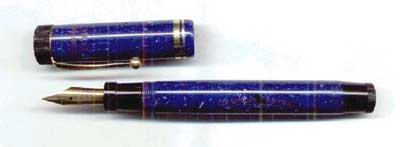
figure
3

figure
4
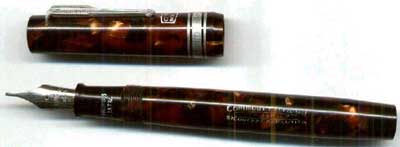
figure
5
Still
another interesting fact is the ink filling technique patented
by the company. It can be defined as a "spoon-filler"
(Figure 6). From late 30s to late 40s Columbus co. was also
producing lever and button filler pens, such as the Columbus
36 (figure 7 and 8). In particular, during the second world
war, because of the scarcity of gold, nibs were made of steel.
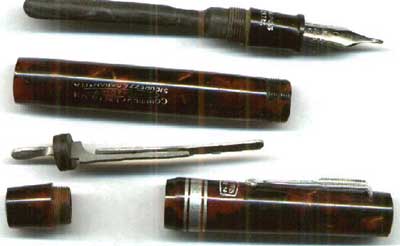
figure
6

figure
7

figure
8
Successively,
from the middle of 40s, Columbus borrowed the Eversharp skyline
design and started the production of a new lever-filler pen
which was named "134" for the oversize version,
132 for the medium size and 130 for the lady version (figure
9).
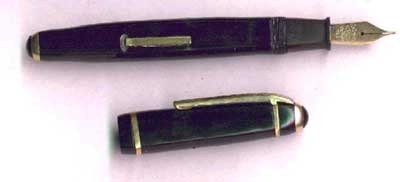
figure
9
During
the 40s, some wonderful celluoid pens were produced which
employed a piston filler technique such as the Columbus 40
(Figure 10).

figure
10
During
the 50s, Columbus Co., like most Italian pen companies, borrowed
the Parker 51 design and started the production of the Columbus
70 (Figure 11). It was a piston filler pen. Nevertheless,
there are several differences which distinguish the Columbus
70 from the Parker 51. Firstly, the Columbus' pen is made
of celluloid, and secondly, the cap can be found also as a
screw cap. In addition, the nib can be found to be "demi-hooded"
to permit a flexible writing style. During the 50s, the company
also produced wonderful overlay button filler pens (Figure
11).
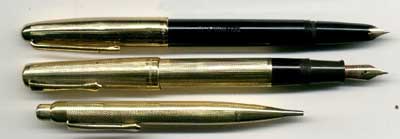
figure
11
In writing
this article, we hope to have shown you some interesting pictures
and to have increased your interest in this prestigious Italian
pen company.
|


